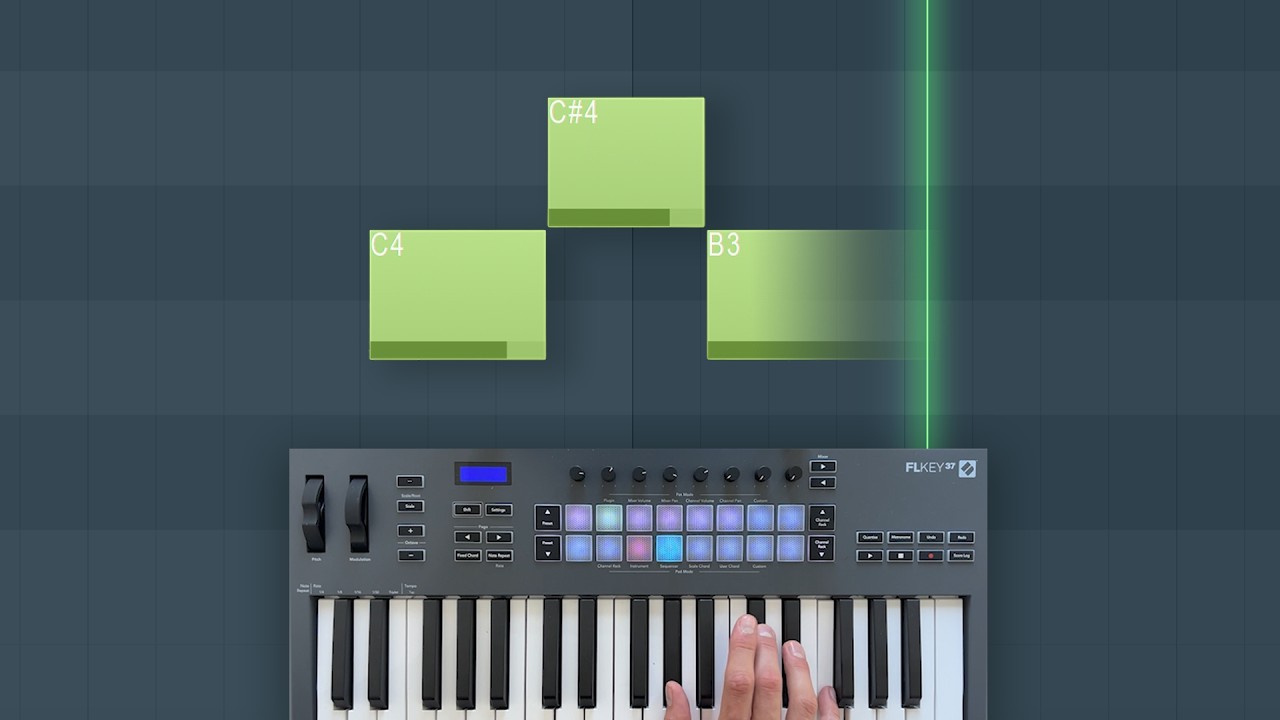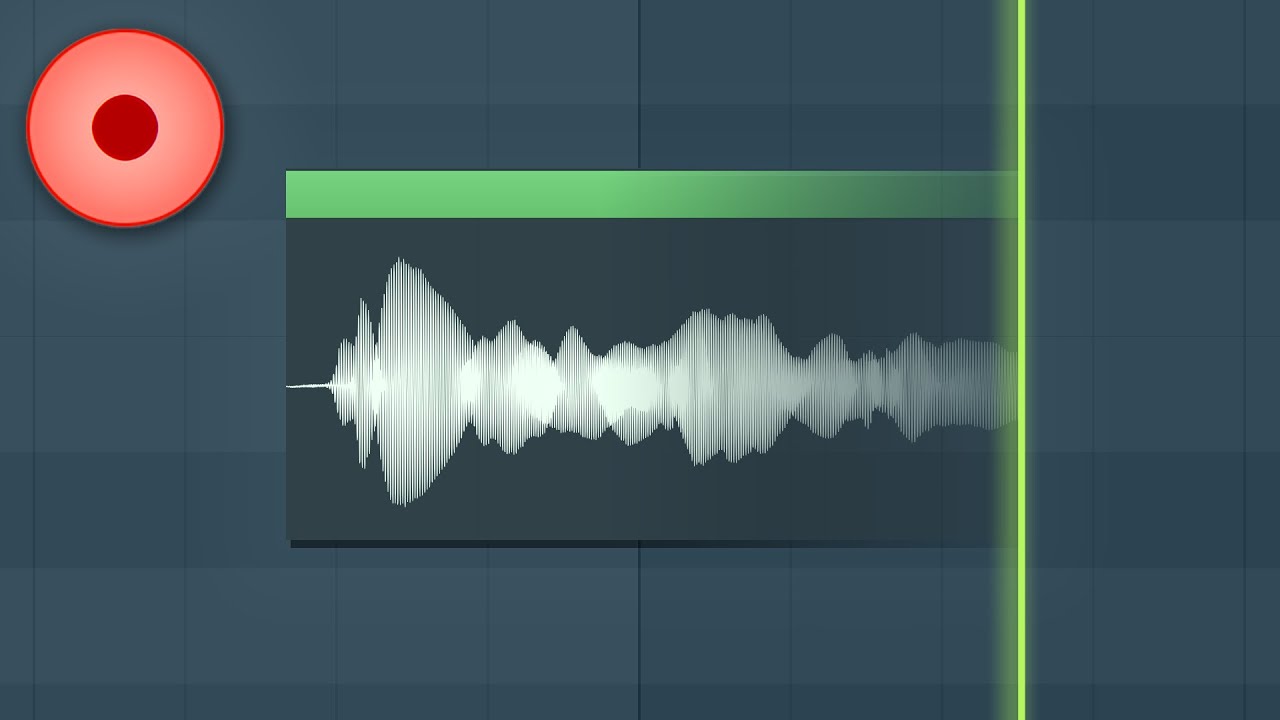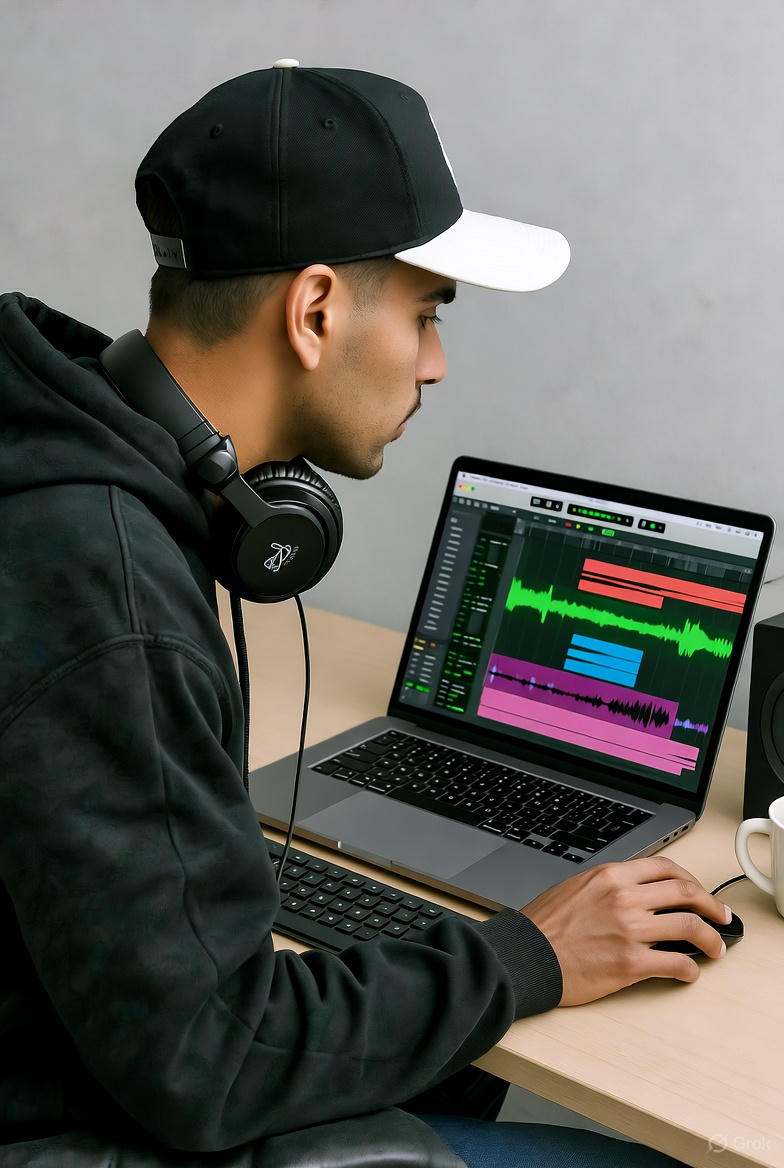!Let Us HELP YOU!
We have a lot of curated content on this blog.
Take this simple 20 second Quiz to Help You
Find The Exact Content You Are Looking For!
Every producer dreams of making beats people cannot stop replaying. Did you know that the most memorable tracks often start with a single bold musical idea, refined through dozens of versions before it ever hits a playlist? Most think you need fancy equipment or expensive plugins but the real magic starts with fundamentals producers often overlook. Turns out the path to chart topping beats is a lot simpler and more surprising than you might expect.
Table of Contents
Quick Summary
| Takeaway | Explanation |
| Start with a strong musical idea | An original concept defines your track’s emotional essence and guides all production choices, from instruments to rhythms. |
| Master your DAW for efficiency | A deep understanding of your Digital Audio Workstation enhances your productivity and creativity, making beat production smoother and more effective. |
| Layer sounds for depth | Effective sound layering creates rich textures; ensure balance and clarity to avoid overcrowding in your mix. |
| Explore diverse genres | Breaking out of your comfort zone introduces fresh ideas, expanding your rhythmic and creative vocabulary for improved productions. |
| Analyze successful beats | Deconstructing existing tracks helps you understand effective techniques, enhancing your skills and inspiring your unique musical style. |
1: Start with a Strong Idea
Every great beat begins with a powerful creative spark. When you approach beatmaking, your initial concept is the foundation that determines the entire musical journey. Successful beat producers understand that originality starts with a compelling musical idea.
Thinking about your beat’s core essence means considering its emotional landscape and intended vibe. Are you crafting a melancholic hip hop track that tells a story of struggle? Or creating an energetic dance beat designed to move crowds? Your initial concept guides everything from instrument selection to rhythmic patterns.
Key considerations for developing a strong beat idea include:
-
Identifying the specific mood or emotion you want to communicate
-
Understanding the genre and stylistic expectations
-
Selecting complementary musical elements that support your core concept
Professional beat makers often recommend starting with a central melodic or rhythmic motif that captures attention. This could be a unique drum pattern, a memorable synthesizer line, or a distinctive sample that becomes the beat’s signature sound. According to Berklee Online’s Music Production Guide, the most memorable beats emerge from producers who treat their initial idea as a narrative thread.
Experimentation is crucial in transforming a basic idea into a fully realized beat. Dont be afraid to deconstruct and rebuild your initial concept multiple times. Many producers generate dozens of variations before settling on a final version that truly resonates.
Remember that strong ideas can come from unexpected places. Listen to diverse musical genres, study different rhythmic structures, and remain open to inspiration from sounds around you. Your unique perspective and creative intuition are your most powerful tools in beat production.
2: Understand Your DAW
A Digital Audio Workstation (DAW) is more than just software – it’s your primary creative tool for beat production. Mastering your DAW is crucial for translating musical ideas into professional tracks. Whether you use FL Studio, Logic Pro, Ableton, or another platform, deep understanding of your specific software can dramatically accelerate your beatmaking skills.
Each DAW has unique workflows, shortcuts, and specialized features that can significantly impact your production process. Professional beat makers invest substantial time learning every nuanced function of their chosen platform.
Key areas to focus on when understanding your DAW include:
-
Keyboard shortcuts and workflow optimization
-
Advanced routing and signal processing techniques
-
Native plugin capabilities and integration
-
Project organization and file management strategies
Beginners often make the mistake of jumping between multiple DAWs without truly understanding one. Consistent practice and deep exploration of a single platform will yield far better results than surface level knowledge across several. Our comprehensive guide on beat production tools offers insights into maximizing your digital workspace.
Specifically, learn how to efficiently use your DAW’s sequencing tools, understand MIDI programming, master automation techniques, and explore sound design capabilities. Many DAWs offer unique features like advanced sampling, complex routing options, and built in virtual instruments that can dramatically expand your creative potential.
Remember that tutorials, online courses, and community forums can accelerate your DAW learning curve. Watch professional producers demonstrate advanced techniques, participate in online workshops, and continuously challenge yourself to learn new functions. Your DAW is essentially an instrument – the more fluently you speak its language, the more powerfully you can express your musical ideas.
3: Layer Your Sounds Effectively
Sound layering transforms ordinary beats into extraordinary musical experiences. Professional beat makers understand that depth and complexity emerge from strategic sonic combinations. Layering involves carefully blending multiple sound elements to create rich, textured musical landscapes that capture listeners’ attention.
WEBSITE RESOURCES FOR MUSICIANS
Think of sound layering like painting. Each sound represents a different color or texture, contributing to the overall musical composition. Some layers provide foundational elements, while others add subtle nuances and emotional depth.
Critical considerations for effective sound layering include:
-
Maintaining frequency balance across different sound elements
-
Ensuring each layer serves a specific musical purpose
-
Avoiding sonic clutter and maintaining clarity
-
Using EQ and compression to create space between layers
According to research from Popular Musicology Online, successful layering requires both technical skill and creative intuition. Producers must understand how different sounds interact, complement, and potentially conflict with each other.
Start by selecting complementary sounds that occupy different frequency ranges. A deep bass drum might pair well with a crisp high-end percussion element. Experiment with combining organic sounds like live instrument recordings with synthesized tones. Learn more about beat production techniques in our FL Studio guide.
Professional tip: Always leave headroom in your mix. Excessive layering can quickly lead to muddy, overwhelmed soundscapes. Use volume and EQ adjustments to ensure each sound retains its individual character while contributing to the collective musical narrative.
Remember that sound layering is both a science and an art. Trust your ears, experiment fearlessly, and dont be afraid to strip back layers that dont serve your musical vision.
4: Explore Different Genres
Musical creativity thrives when producers break genre boundaries and embrace sonic diversity. Limiting yourself to a single musical style restricts your potential for innovation and artistic growth. Exploring different genres introduces unique rhythmic patterns, instrumental techniques, and compositional approaches that can dramatically transform your beatmaking skills.
Genre exploration is not about mastering every musical style but understanding their fundamental characteristics and creative principles. Each genre offers distinctive elements that can inspire and enhance your musical production.
Key benefits of exploring multiple genres include:
-
Expanding your rhythmic vocabulary
-
Understanding diverse sound design techniques
-
Developing more flexible musical thinking
-
Breaking creative predictability
According to research on musical diversity, artists who experiment across genres tend to develop more sophisticated and innovative musical perspectives. A hip hop producer might discover fascinating drum patterns from Latin jazz, while an EDM creator could learn intricate sound layering techniques from classical composition.
Practical genre exploration involves active listening and intentional study. Listen critically to music outside your comfort zone. Analyze how different genres construct their sonic landscapes. Pay attention to drum patterns in reggae, harmonic progressions in jazz, or atmospheric textures in ambient electronic music.
Dont just listen passively. Actively deconstruct tracks from unfamiliar genres. Try recreating specific elements in your own productions. This hands on approach transforms theoretical knowledge into practical musical skills.
Remember that genre boundaries are increasingly fluid in modern music production. The most exciting beats often emerge from unexpected musical intersections. Your unique perspective comes from blending influences rather than rigidly adhering to traditional genre constraints.
5: Utilize MIDI Patterns
MIDI patterns are the secret weapon of professional beat makers, transforming complex musical ideas into reproducible, scalable compositions. These digital musical blueprints allow producers to capture rhythmic and melodic sequences with unprecedented precision and flexibility.
MIDI patterns function as musical building blocks, enabling you to experiment, modify, and reimagine your beats without being constrained by traditional recording limitations. Unlike audio recordings, MIDI data can be endlessly manipulated, transposed, and restructured.
Critical strategies for effective MIDI pattern utilization include:
-
Creating custom pattern libraries
-
Understanding pattern transposition techniques
-
Experimenting with rhythm and velocity variations
-
Mapping patterns across different virtual instruments
According to research by Ferraro and Lemstrm, identifying and utilizing repeating musical patterns can significantly enhance beat production sophistication. Professional producers view MIDI patterns as living, breathing musical elements that can be stretched, compressed, and recontextualized.
Start by developing a personal MIDI pattern library. Record interesting rhythmic sequences, melodic progressions, and drum patterns. Organize these patterns by genre, mood, or instrumental category. Check out our comprehensive guide to beat production in Ableton for advanced MIDI manipulation techniques.
Dont just copy existing patterns. Use them as inspiration to develop your unique sound. Experiment with changing note velocities, adjusting timing, and layering multiple patterns to create complex, dynamic beats. The most innovative productions emerge from creative MIDI pattern manipulation.
Remember that MIDI patterns are tools of musical exploration. They provide a framework for creativity, not a rigid constraint. Trust your musical intuition and dont be afraid to break traditional pattern rules to discover something truly original.
6: Experiment with Effects
Audio effects are the painters brushes of music production, transforming raw sounds into extraordinary sonic landscapes. Each effect represents a unique tool that can dramatically alter the emotional and technical character of your beats, turning ordinary tracks into compelling musical experiences.
Effects are not just technical additions but creative instruments that allow producers to express themselves beyond traditional instrumentation. A well placed effect can turn a simple drum loop into a mind bending rhythmic journey.
Key considerations when exploring audio effects include:
-
Understanding the purpose of each effect type
-
Maintaining sonic clarity while adding complexity
-
Avoiding over processing that muddles your original sound
-
Developing a nuanced ear for subtle effect applications
According to MIT’s Musical Acoustics and Audio Effects research, digital signal processing techniques provide profound opportunities for sonic manipulation. Reverb can create spaciousness, delay can generate rhythmic complexity, and distortion can add grit and character.
Explore our comprehensive plugin guide to understand how professional producers leverage different effect chains. Start by experimenting with subtle effect applications. A touch of compression can tighten a drum pattern, while gentle saturation can warm up a synthesizer sound.
Dont be afraid to break traditional effect usage rules. Some of the most innovative beats emerge from unconventional effect applications. Try routing effects in unexpected sequences, automating parameters dynamically, or using effects designed for one instrument on completely different sound sources.
Remember that effects are tools of musical storytelling. They should enhance your beat’s emotional core, not overshadow its fundamental musical idea. Trust your ears, experiment fearlessly, and let your creativity guide your effect choices.
7: Analyze Successful Beats
Deconstructing successful beats is like reverse engineering musical magic. Professional beat makers do not create in isolation but continuously study and learn from tracks that have already captured audience attention. This analytical approach transforms inspiration into actionable musical knowledge.
Successful beat analysis goes beyond simple imitation. It involves understanding the intricate musical decisions that make a beat compelling, memorable, and emotionally resonant. Each successful beat contains hidden lessons about rhythm, arrangement, sound design, and emotional communication.
Key elements to examine when analyzing beats include:
-
Rhythmic structure and groove complexity
-
Frequency balance and sound selection
-
Arrangement and energy progression
-
Emotional narrative and sonic texture
According to research exploring song popularity dynamics, understanding genre specific characteristics plays a crucial role in creating impactful music. Electronic dance music, for instance, demonstrates complex interactions between musical features that contribute to a track’s success.
Learn more about creating specific beat styles by studying tracks within your target genre. Listen critically, not just passively. Break down each beat into its fundamental components. What makes the drums punch? How are melodic elements introduced and developed? How does the producer create tension and release?
Transcribe beats manually to truly understand their construction. Try recreating successful beats in your DAW, paying attention to every subtle detail. This hands on approach reveals production techniques that might not be immediately obvious during casual listening.
Remember that analysis is not about copying but understanding. Your goal is to internalize musical principles, not reproduce existing beats. Use your analytical insights to develop your unique sound, combining learned techniques with your creative vision.
The table below provides a comprehensive summary of the 7 best beatmaking tips for aspiring music producers, including each main tip, its key focus, and the core benefit for music production success.
| Tip | Key Focus | Core Benefit |
| Start with a Strong Idea | Build beats around a central, original concept | Gives your music emotional direction and defines your sound |
| Master Your DAW | Deeply understand your chosen digital audio workstation | Boosts creative efficiency and workflow productivity |
| Layer Sounds Effectively | Combine multiple sound elements with balance and clarity | Creates depth, texture, and a polished mix |
| Explore Different Genres | Incorporate diverse musical influences and patterns | Expands creativity and inspires innovative production |
| Utilize MIDI Patterns | Develop and manipulate MIDI sequences for flexibility | Enables easy editing and dynamic beat creation |
| Experiment with Effects | Use audio effects to enhance and transform sounds | Adds interest, emotion, and uniqueness to your tracks |
| Analyze Successful Beats | Study and deconstruct hit songs | Reveals effective techniques to inform and inspire your style |
Ready to Transform Your Beatmaking Skills?
If you found the 7 best beatmaking tips in our article helpful, you probably recognize the struggle of turning creative ideas into polished, professional beats. Maybe you are stuck in repetitive patterns, frustrated by DAW limitations, or overwhelmed by endless equipment reviews. This is where personalized resources and in-depth tutorials make all the difference. Imagine leveling up your sound layering, MIDI work, and DAW mastery with hands-on guides tailored to every genre, not just hip-hop.
Take action now and fast-track your growth as a music producer. Dive into detailed FL Studio tutorials to break through workflow barriers. Explore comprehensive audio equipment and MIDI plugin reviews to upgrade your tools. And, for a true hub covering all your beatmaking needs across pop, trap, EDM, and more, start with our complete resource center at How To Make Beats Blog. Your breakthrough as a producer starts with one click. Visit now and give your next beat the edge it deserves.
Frequently Asked Questions
What is the first step in beatmaking for music producers?
Every successful beat starts with a strong idea. Focus on identifying the mood or emotion you want to convey, and consider the genre to help guide your creative process.
Why is it important to master my DAW?
Mastering your Digital Audio Workstation (DAW) is crucial as it allows you to effectively translate your musical ideas into professional tracks. Understanding keyboard shortcuts, routing, and available plugins can significantly enhance your production process.
How can I improve my sound layering in beatmaking?
To enhance sound layering, ensure you’re maintaining frequency balance and clarity among different elements. Use EQ and compression to create space in your mix and avoid sonic clutter while keeping each layer’s purpose clear.
What are the benefits of experimenting with different genres?
Exploring various genres expands your rhythmic vocabulary and understanding of sound design techniques. It encourages flexibility in your musical thinking and can lead to innovative musical perspectives by blending different elements.



